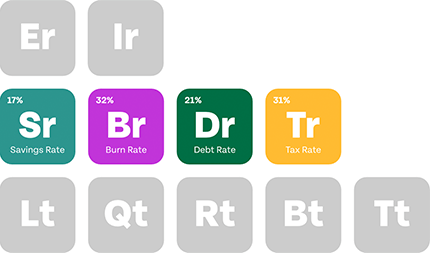Ophthalmologist salary can differ greatly depending on one’s field within the subspecialties of ophthalmology. The range of ophthalmologist salary often reflects the demand for specialized procedures, the complexity of the surgeries, and the patient volume for each field.
Key Takeaways
- The subspecialties of ophthalmology vary greatly in compensation, with higher pay in retina surgery, corneal surgery, and oculoplastics.
- Subspecializing in a high-demand area with complex procedures generally leads to increased compensation.
- Retina surgery is often the highest-paying subspecialty due to the complexity of cases and advanced technology used.
- For ophthalmologists aiming to increase their income, subspecializing in one of these fields may be a strategic career move.
- Understanding the financial aspects of each subspecialty is important for long-term financial success.
Table of Contents
Ophthalmology Subspecialties: A Breakdown of the Highest Paying Fields
Among the various subspecialties of ophthalmology, those that consistently offer higher compensation packages compared to general ophthalmology include retina surgery, oculoplastics, and corneal surgery, where salaries may range from $300,000 to over $600,000.. Retina surgeons, for example, treat complex and often sight-threatening conditions such as macular degeneration, diabetic retinopathy, and retinal detachments. These subspecialties demand extensive training, rely on advanced technology, and address conditions that are increasingly common among the aging population, which drives both demand and higher earning potential.
As a result, professionals in these fields often command higher pay due to the increased skill and resources required. It is important for ophthalmologists to consider how subspecializing can affect their earning potential and career satisfaction.
Retina Surgery: One of the Most Demanding Subspecialties of Ophthalmology
Retina surgery typically represents the upper echelon of the subspecialties of ophthalmology. These specialists perform some of the most intricate and delicate procedures in the field, often utilizing cutting-edge technology like laser treatments and specialized vitreoretinal surgical equipment.
Common conditions that retina surgeons treat include diabetic retinopathy, macular degeneration, and retinal detachments, which are prevalent in the growing elderly population. The expertise required to manage these conditions, coupled with the frequent necessity for such procedures, places retina surgeons at the top of the income spectrum in ophthalmology.

Retina specialists can expect to earn salaries that are at the higher end, often exceeding $500,000 annually depending on geographic location, patient volume, and the particular services offered. Retina surgeons located in metropolitan areas or those operating private practices with the capability to perform advanced and urgent care procedures can attract patients who are seeking immediate and specialized treatment, thus commanding higher fees.
This subspecialty is also associated with an extensive training period, typically involving a 2-year fellowship after completing an ophthalmology residency. This lengthy and focused education contributes to the retina surgeon’s capability to command a premium in their salary negotiations.
Corneal Surgery: A Vital Subspecialty of Ophthalmology with Growing Demand
Corneal surgery is another high-reward field within the subspecialties of ophthalmology, with many surgeons in this field earning a significant salary boost. The cornea is responsible for most of the eye’s focusing power, and as such, corneal surgeons deal with a variety of conditions ranging from cataracts and corneal ulcers to glaucoma.
The compensation for this specialty is on the rise, particularly because of the increasing demand for refractive surgeries such as LASIK, which is a popular procedure that reshapes the cornea to correct vision. LASIK and other corneal surgeries are often paid for out-of-pocket by patients, which can lead to high-volume practices for those in private practice or a surgical setting.
Corneal surgeons who specialize in these procedures and work in high-demand areas can often see their ophthalmologist salary increase significantly, with some professionals earning more than $400,000 annually. Additionally, as the population ages, there is a consistent need for cataract surgeries, which are the most common type of corneal surgery, further driving up compensation for these specialists.
Oculoplastics: A Diverse Subspecialty of Ophthalmology with Cosmetic and Functional Focus
Oculoplastics is the subspecialty of ophthalmology that deals with the surgical treatment of eyelids, tear ducts, and the orbit around the eye. Oculoplastic surgeons perform both reconstructive surgeries and cosmetic procedures, such as eyelid lifts or modifications after trauma or cancer surgery. The skill set of an oculoplastic surgeon is in high demand for both medical and aesthetic reasons.
In terms of ophthalmologist salary, oculoplastics is quite rewarding, with potential earnings ranging from $350,000 to over $400,000 per year. This range is influenced by the surgeon’s experience, the location of practice, and the types of procedures they perform. Surgeons who perform cosmetic procedures like eyelid lifts, botox injections, or other aesthetic treatments often earn higher compensation.
Patients are frequently willing to pay a premium for these cosmetic enhancements, which can result in a substantial increase in patient volume and, by extension, income for the oculoplastic surgeon. Furthermore, these specialists also address a variety of functional conditions related to the eyelids, tear ducts, and orbit, which can lead to a diverse and financially successful practice.
Financial Considerations for Subspecialties of Ophthalmology
Subspecializing in one of the subspecialties of ophthalmology like retina surgery, corneal surgery, or oculoplastics can lead to increased compensation for ophthalmologists. However, it’s essential to consider the financial implications of the additional years of training and potential debt from medical school and residencies.
Fellowship programs in these high-demand subspecialties can be costly and time-consuming, often resulting in significant student loan debt. Furthermore, physicians within the subspecialties of ophthalmology might face higher malpractice insurance premiums due to the complex nature of the surgeries they perform.

For those in private practice, understanding the operational costs of running a specialized clinic is vital. The financial investments in equipment, personnel, and insurance can be substantial, especially in technically advanced fields such as retina and corneal surgery. Effective financial planning and management are key to maximizing earnings in these lucrative subspecialties.
Physicians Thrive provides financial planning services that can help ophthalmologists navigate these costs while optimizing their income. Whether you are in the process of contract negotiations, seeking affordable insurance options, or planning for long-term financial growth, we are here to assist you.
Choosing the Right Subspecialty of Ophthalmology for Your Career
When exploring the subspecialties of ophthalmology, it’s clear that certain high-reward areas like retina surgery, corneal surgery, or oculoplastics can significantly enhance one’s earning potential. Each of these subspecialties requires additional training and expertise but offers the potential for high financial returns.
For ophthalmologists interested in increasing their income, choosing the right subspecialty that aligns with their interests and career goals is crucial. Careful consideration of the financial and training aspects of each subspecialty will be beneficial in the long term.
Financial planning is an integral part of maximizing one’s earnings in these fields. Physicians Thrive offers services tailored to the unique needs of medical professionals. Contact us to begin crafting a financial plan that complements your ophthalmology career path.








































